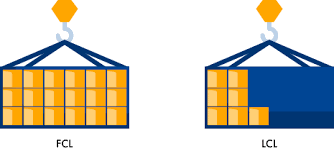LCL or FCL, which is better?
LCL or FCL, which is better?
You may have already heard the terms LCL and FCL in contexts of import and export, after all, they are acronyms referring to cargoes frequently used in foreign trade. But what does it actually mean and how can it help your business?
LCL (Less Container Load) literally means less than the container load, which does not mean that this load cannot ship. On the contrary, LCL comes as a solution to this. In this modality, loads from different importers that are below the indicated for a complete container, come together in the same container, allowing the full occupation of the container and reducing costs, since the costs will be divided.
LCL is a great option for smaller loads, which, because they do not occupy a total container, sometimes end up having their shipments canceled and deliveries are not made. For the small and medium importer, it is a way to make their import process cheaper, and, still, it can be an excellent ally in the purchase of products that you want to enter the market, but you are still not sure about their return.
Unlike LCL, another method for shipping cargo in containers, it is FCL (Full Container Load), which means fully loaded container with a single load. As the name implies, in this model, there is enough cargo to fill a container alone, or if you want the cargo to be transported alone.
In the FCL option the container is all yours. In the LCL option you share the container with other importers.
The advantage of LCL, shared cargo, is that you are not obliged to pay for the entire space of the container, but only to pay for the space of your cargo. However, you will wait for the container to complete the load to begin shipping.
The advantage of FCL, full load, is that you manage your load. However, especially in the case of small importers, sometimes there is no charge to fill a container.
LCL or FCL, which is better?
For you to calculate the container filling, the occupation of a container, by weight or per cubic meter, you can use the INTRADEBOOK platform – www.intradebook.com
Image: shipafreight.com







